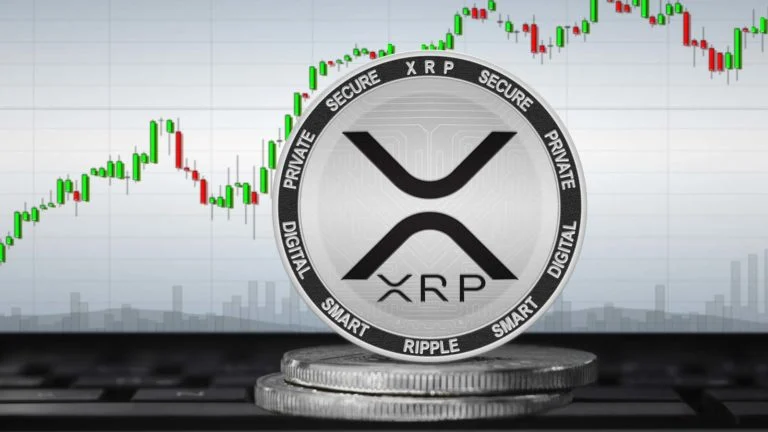XRP stock, Actually XRP is a Cryptocurrent not stock. XRP is a cryptocurrency designed for fast and cheap global payments. Unlike traditional methods that can take days, XRP transactions can settle in seconds. Financial institutions use the Ripple network, powered by XRP, to exchange currencies more efficiently. The price of XRP can fluctuate depending on factors like supply and demand, adoption by financial institutions, and overall cryptocurrency market sentiment.
Distinction Between XRP Stock and Stocks
XRP is a cryptocurrency, not a stock. Here’s why:
Nature and Purpose:
Cryptocurrency: XRP is a digital currency designed for use in cross-border payments and remittances. It operates on a decentralized blockchain network, allowing for fast and low-cost transactions.
Stock: Stocks represent ownership in a company. When you buy shares of a company’s stock, you become a partial owner and may receive dividends or participate in company decisions.
Issuer:
Cryptocurrency: XRP was created by Ripple Labs. It serves as a bridge currency for facilitating international money transfers.
Stock: Stocks are issued by publicly traded companies. Owning stock means having a stake in the company’s assets and profits.
Market Regulation:
Cryptocurrency: The crypto market operates with varying degrees of regulation. Cryptocurrencies are not directly overseen by government agencies like stocks are.
Stock: Stock markets are heavily regulated by financial authorities. Companies must comply with reporting requirements and disclose financial information.
Valuation:
Cryptocurrency: XRP’s value is determined by supply, demand, and market sentiment. It can be highly volatile due to speculative trading.
Stock: Stock prices are influenced by company performance, earnings, and investor confidence. They tend to be more stable than crypto prices.
Ownership Rights:
Cryptocurrency: Owning XRP doesn’t grant ownership rights in Ripple Labs. It’s purely a medium of exchange.
Stock: Stockholders have voting rights and may attend shareholder meetings. They can influence company decisions.
Behind the Scenes: How XRP Facilitates Frictionless Payments
XRP, a digital asset often referred to as a cryptocurrency, plays a crucial role in the Ripple network – a system designed to revolutionize global payments. But how exactly does XRP work within this network?
Unlike traditional cryptocurrencies like Bitcoin, XRP doesn’t focus on mining or becoming a store of value. Instead, it acts as a bridge currency, facilitating the exchange of various assets – fiat currencies, other cryptocurrencies, even commodities – seamlessly and efficiently.
Imagine you want to send money from the US to someone in Europe. Traditionally, this involves currency conversion fees and can take several days. Here’s where XRP shines:
Initiating the Transfer:
You send the equivalent amount in your local currency (USD) to a payment gateway on the Ripple network. This gateway instantly converts your USD into XRP.
Fast and Secure Transaction:
The XRP network, with its unique consensus mechanism, validates the transaction in seconds. This mechanism relies on trusted servers, instead of energy-intensive mining like Bitcoin.
Settlement in Local Currency:
The receiving gateway in Europe then converts the XRP back into the recipient’s desired currency (EUR) and deposits it into their account.
This process eliminates the need for pre-exchanging currencies, saving time and transaction fees. XRP acts as a neutral intermediary, ensuring smooth conversion between different assets.
But XRP’s benefits extend even further:
- Speed: Transactions are confirmed in mere seconds, a vast improvement over traditional methods.
- Cost-effective: XRP transactions incur minimal fees, making them ideal for small and frequent payments.
- Scalability: The Ripple network can handle a high volume of transactions efficiently.
However, it’s important to note that XRP’s success hinges on the adoption of the Ripple network by financial institutions. As more institutions leverage Ripple for cross-border payments, the demand for XRP is likely to rise.
In essence, XRP operates as the engine that powers the Ripple network’s fast and cost-effective payment system. While not a traditional stock, XRP’s role in facilitating global financial transactions makes it an intriguing asset to watch in the evolving world of digital payments.
Factors Affecting XRP Price
Let’s delve into the factors that influence the price of XRP, the cryptocurrency associated with Ripple:
The Technology of Ripple:
The underlying technology that powers XRP plays a significant role in determining its price. Ripple’s unique consensus algorithm and fast transaction processing capabilities contribute to its appeal in the crypto market.
The Hype:
Hype can propel any asset’s value. Positive news, partnerships, or developments related to Ripple can create a surge in demand and subsequently impact XRP’s price1.
The Crypto Holders:
The behavior of XRP holders matters. Large holders (whales) can influence the market by buying or selling substantial amounts of XRP. Their actions can cause price fluctuations1.
The Competition:
XRP competes with other cryptocurrencies, especially those in the cross-border payments space. The level of adoption and competition from alternatives affect XRP’s valuation1.
The Lawsuit Against SEC:
In 2020, the US Securities and Exchange Commission (SEC) filed a lawsuit against Ripple, alleging that XRP was an unregistered security. Legal outcomes and regulatory decisions impact XRP’s price.
Other Factors:
Market sentiment, macroeconomic conditions, and investor sentiment all play a role. Additionally, broader crypto market trends and external events can sway XRP’s value.
Remember that XRP’s price is influenced by a complex interplay of these factors, making it essential for investors to stay informed and consider multiple perspectives when predicting its future







